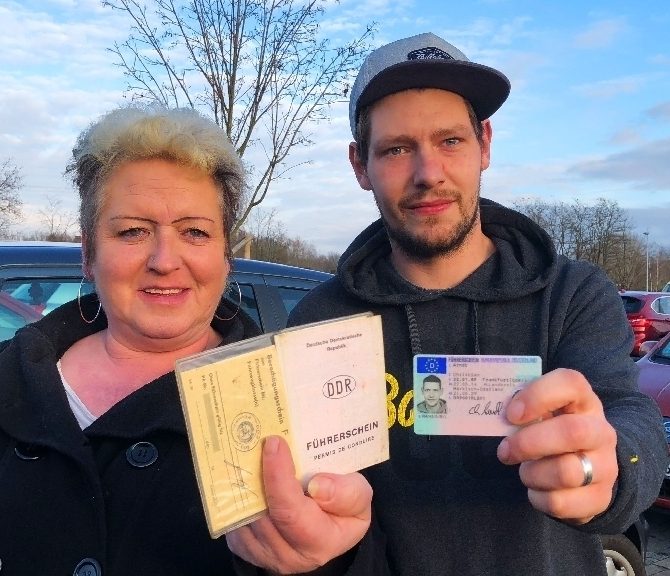Understanding the C1E 171 Driver's License: A Comprehensive Guide
The world of driving licenses can typically feel intimidating, particularly when trying to understand the numerous classifications and the requirements associated with them. In this article, we dive into the specifics of the C1E 171 driver's license, discussing what it involves, the eligibility requirements, the accreditation process, and how it differs from other types of driving licenses.
What is a C1E 171 Driver's License?
A C1E 171 driver's license permits a specific to drive specific categories of automobiles, specifically a mix of a vehicle in the C1 classification (which usually includes medium-sized cars) and a trailer going beyond a particular weight limit. This license is vital for numerous occupations, particularly those in freight transport, logistics, and related fields.
Key Features of the C1E 171 License
- Lorry Categories: The license permits driving of lorries in the C1 classification (up to 7.5 tonnes) with a trailer that surpasses 750 kg.
- Use: Commonly needed by business chauffeurs or individuals who need to transfer larger products.
- Laws: There specify rules regarding the operation and upkeep of the vehicles under this license.
Eligibility Criteria
To make an application for a C1E 171 driver's license, prospective drivers should fulfill specific conditions. Below is a list of basic eligibility requirements:
- Age: The candidate must be at least 18 years old.
- Previous License: A valid C1 license is required before looking for the C1E license.
- Medical checkup: A medical check-up is required to make sure that the candidate is fit to drive.
- Theory Test: Candidates must pass a theory test that covers appropriate roadway laws and vehicle operation.
- Practical Test: An evaluation of driving competency is performed, which involves running the automobile and trailer combination securely.
The Application Process
Acquiring a C1E 171 motorist's license requires a number of steps, detailed in the table listed below:
| Step | Description |
|---|---|
| 1 | Total Requirements: Ensure you satisfy eligibility criteria. |
| 2 | Medical Check: Schedule and complete the necessary medical checkup. |
| 3 | Theoretical Exam: Study and pass the theory test concerning road guidelines and security. |
| 4 | Practical Training: Enroll in training for driving larger lorries and hauling trailers. |
| 5 | Practical Exam: Pass the driving test to show proficiency. |
| 6 | Receive License: Upon passing all required tests, the C1E 171 motorist's license will be issued. |
Value of Holding a C1E 171 License
Holding a C1E 171 license uses several benefits, particularly for those in specific markets. Here are some notable points:
- Career Opportunities: Many logistics business require motorists to have a C1E license due to the need for transporting bigger loads.
- Increased Earning Potential: Drivers with specialized licenses can frequently command higher earnings than those with general licenses.
- Expert Development: The training associated with acquiring a C1E license improves driving proficiency, which can contribute to overall profession development.
Distinctions Between C1, C1E, and Other Licenses
Comprehending the differences between numerous categories of driving licenses is essential. Here's a comparison:
| License Type | Automobile Weight (with or without trailer) | Trailer Allowed |
|---|---|---|
| C1 | Approximately 7.5 tonnes | Approximately 750 kg |
| C1E | Up to 7.5 tonnes | Exceeds 750 kg |
| B | Up to 3.5 tonnes | Approximately 750 kg |
| BE | Up to 3.5 tonnes | Surpasses 750 kg |
| D1 | As much as 16 travelers (not consisting of the driver) | Up to 750 kg |
Often Asked Questions (FAQs)
1. How long does it take to obtain a C1E 171 license?
The duration differs based on specific preparation and training. A lot of candidates can expect the procedure to take anywhere from a couple of weeks to a number of months.
2. Is the C1E 171 license valid in all European countries?
While the C1E license is recognized in lots of European nations, policies can differ slightly. It's advisable to examine the particular country's laws regarding automobile operation.
3. Can I drive a motorhome with a C1E license?
Yes, if the motorhome surpasses the weight limit for a standard car license and you adhere to trailer guidelines, a C1E license can be applicable.
4. What should I do if I stop working the theoretical or practical driving test?
Candidates usually need to wait a designated duration before retaking the test. Suggested Studying is important to examine the areas of difficulty to improve chances of passing on the next attempt.
5. Exist any ongoing requirements to keep the C1E license?
Normally, there are no constant education requirements, but remaining up to date with road security and policies is always suggested.
The C1E 171 motorist's license acts as an important credential in the transportation and logistics sectors, allowing drivers to run larger vehicles with higher combinations. Those seeking this license must pay cautious attention to eligibility criteria, finish the needed training, and get ready for both theoretical and practical examinations.
By comprehending this license and its requirements, people can make educated decisions concerning their driving profession aspirations and boost their expert certifications.

